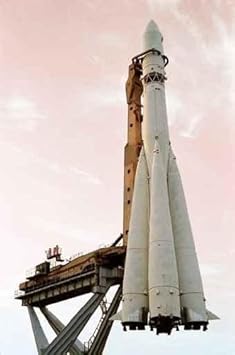 Remember the great Space Race between the USA and the USSR?
Remember the great Space Race between the USA and the USSR? It started with the Soviet Union's launch of the Sputnik, the first satellite in space, on October 4, 1957. The perception that its Cold War nemesis was gaining a technological upper hand, shocked the United States government into action and inspired the NASA space program and President John F. Kennedy's famous 1961 promise to land a man on the moon and return him safely to Earth within the decade.
For most of a decade, the USSR seemed to be leading the race. The Soviets had the first artificial satellite, the first Moon probe, the first man in space, and the first spacewalk.
 "The Soviet Union was engaged in a secret but all-out attempt to beat America to the Moon," writes Claude A. Piantadosi in his history of human space exploration, Mankind Beyond Earth.
"The Soviet Union was engaged in a secret but all-out attempt to beat America to the Moon," writes Claude A. Piantadosi in his history of human space exploration, Mankind Beyond Earth.Yet, well before the finish line in 1969 when Neil Armstrong and Buzz Aldrin set foot on the Moon, the Soviets were out of the race. Why did their space program pull up lame after such a strong start?
Piantadosi succinctly attributes it to the unexpected death of its leading rocketeer, Ukrainiand aeronautical engineer Sergei Korolyov, who died of a heart attack during colon cancer surgery at the age of 59.
"When the United States announced its plan to land men on the Moon, the USSR had diverted its N1 rocket project to a lunar program in an effort to beat the Americans again," he explains. "Korolyov's untimely death dealt the Soviets' N1 a death blow, and it never flew... Had he lived, the Moon race certainly would have been closer."
Mankind Beyond Earth
Out of the Past: History Lessons
Timeline
History and American West Titles
Artwork: Russian Rocket

